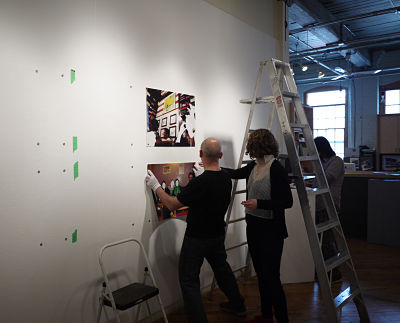Gender and Exposure in Contemporary Iranian Photography
Gallery 44
May 4 – June 16, 2012
Artist Talk: Saturday, May 5, 3 – 4 p.m
Interview with curator Andrea Fitzpatrick (A.F.) and artists Samira Eskandarfar (S.E.) and Amirali Ghasemi (A.G.) by artoronto.ca (Barbara D. Waginski B.W.)
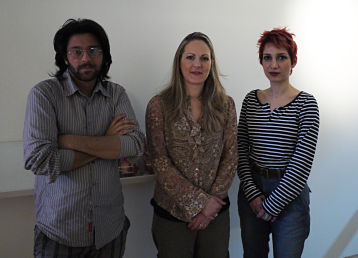 From left to right: artsist, Amirali Ghasemi, curator Andrea Fitzpatrick and artist Samira Eskandarfar
From left to right: artsist, Amirali Ghasemi, curator Andrea Fitzpatrick and artist Samira Eskandarfar
B.W: Where did the idea for this project come from?
A.F: The idea for this project was a response to the discovery of the history of Iranian photography which happened for me about 3 years ago. Through research I discovered that Iran has an incredible history of photography going back to 1848 and in fact it was the first Middle Eastern country that was creating, taking, and collecting photographs from a local indigenous perspective rather than colonial or imperial tourists coming to take pictures of the Iranians. This history of photography is not represented at all in the Western history of photography books, even those who call themselves global, and this was an absolute shock and revelation. In 2010, I discovered the book Iranian Photography Now by Rose Issa, which had a beautiful selection of Iranian contemporary documentary and art photography. I didn’t know a single artist in that book and that completely shocked and amazed me. Besides that I was reading the wonderful memoirs published by Iranian exiled artists such as Iran Awakening by Shirin Ebadi, Reading Lolita in Tehran by Azar Nafisi, as well as the Canadian Iranian writer Marina Nemats Prisoner of Tehran. The most exciting thing though was discovering that there was this huge scene of contemporary Iranian photographic art happening that I was not aware of as a specialist in the field. This project and the sister exhibit at the SAW gallery in Ottawa is a result from my trip to Iran in 2010 and that research. I wanted to share this with Canadian audiences because for most people here, we know the name of Shirin Neshat and a lot of Iranian filmmakers but so far the young photographic and video artists are not known here. In Iran I saw such a vibrant art scene and the number of women artists was really impressive as was the work because it just gave a whole other view of art, culture and values that are important and this is very different unfortunately from what we know about Iran coming only through news stories.
The particular theme of this exhibition is a little more based on the curatorial and art historical focus on art in the Middle East that has been happening for the past 10-20 years which seems to focus strongly on issues of the veil and feminity, or issues of oppression and religious affiliation and certain clichés. That wasn’t what I was seeing in the art that was being created in Tehran. As the title of the show and the images included suggest, gender itself is a very broad issue, masculinity is a serious focus and ongoing subject that is really interesting to know about and aspects of gender involve more than just the veil. Of course the veil is always present but there is a broader perspective.
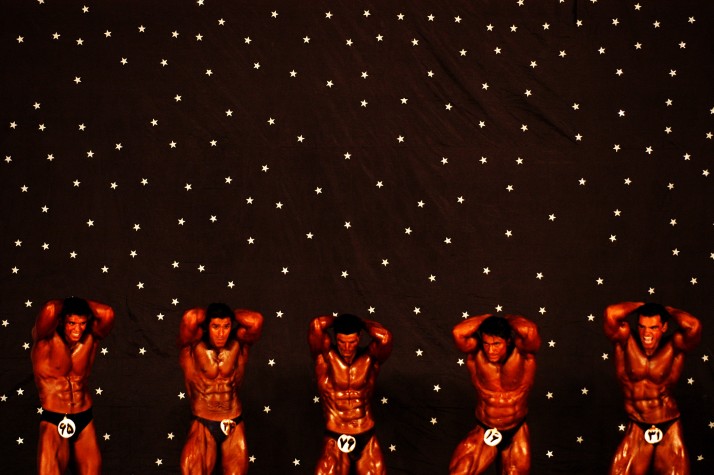 Abbas Kowsari, Masculinity 1, 2006
Abbas Kowsari, Masculinity 1, 2006
B.W: How do you think the public will perceive your work? Are any specific communities more (or less) receptive to your work?
A.F: (Regarding how the public will perceive the gallery): There is a lot of interest because of the type of society, we are lucky in Canada because it is so multicultural. We have a little more access to alternative media channels in Canada and international perspectives than the united states perhaps. So I think people are more positively predisposed to coming to see this work. People want to know what is going on and just because of the type of open and global focus that makes up Canadian society I think that people will be enthusiastically responding. Because we are Canadians and we embrace the knowledge of other countries to the extent we are so self deprecating. What defines us as Canadians is interest and acceptance of other cultures and Toronto is the city that manifests that so well.
A.G: I guess there should a kind of basic interest when the works are shown in a totally new context, when its coincides with contact it gives it a good exposure, and I hope beyond the primary gaze which is fueled by the media and recent unrests in the region the works could be seen as fragments of a multilayered society and not to fall into generalization combined with stereotypes and cliches or Neu-Cliches… But coming back to your question I guess international community as well as groups from the Iranian communities living abroad would be a possible audience for this show, but personally I would like to see less national groupings and more conceptual setups where people from various backgrounds and origins get a chance to meet and interact with each other. I guess this is a very good season for it during Contact and all the surrounding events.
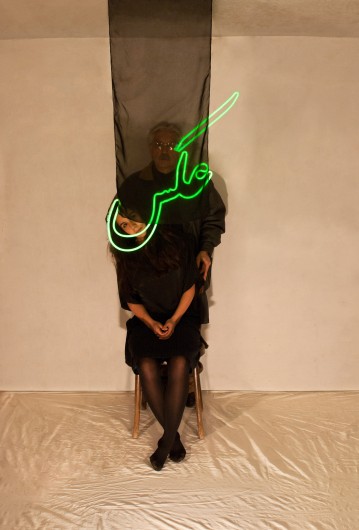 Arman Stepanian, The Hidden Meaning of Photography in Iran (Nazanin 1), 2010
Arman Stepanian, The Hidden Meaning of Photography in Iran (Nazanin 1), 2010
B.W: Given the controversy surrounding gender–related issues in the Middle East, have you encountered any specific barriers (legal or other) throughout your or other artists’ careers?
A.G: Well every context has its own circumstances and there are more cultural issues that stand out rather than official encounters. Growing up in a country and developing your work creates chances and challenges and every given context has its own limitations and opportunities. For me it is more like a challenge especially when you choose social issues as your subject. It is an interesting challenge of how to engage people with your work, how to interact with them without causing any problems, or how to avoid them in a clever and indirect ways … I don’t claim that there are no barriers but I myself never faced limitations per-se, but there were times when I had an idea and it had to be re-thought in order to be shown to a greater audience.
S.E: I think that there should be some sort of difficulties in order to show your work. I didn’t really face any severe kind of problems in the past 10 years when I was showing my work. The reason for this I think is that when you are working and are engaged with a concept or topic you can work freely. But when it comes to showing your work, then you can choose what to show and what not to show. You can choose what is appropriate to be shown and to which audience. Every context has its own specifications and circumstances that have to be realized.
B.W: Some of the men look very westernized with their naked upper bodies emphasizing bodybuilding. The skinny ones are almost ridiculous in their heroic poses. I feel a sense of irony in their depiction. Am I right?
A.F: (speaking in regards to the pieces by Sadegh Tirafkan): with Sadegh’s interpretation I don’t think it is so much irony as he is an artist viewing these traditional wrestlers through an artist’s slightly distanced view. The tradition and even photographic portraits of these male wrestlers goes right back to the beginning of photography in Iran. There’s a history of staged portraits of these strong men in the gyms from the mid 19th century so this infuses the photographic imagination of Iranian photo buffs. Sadegh updates his shooting of the wrestlers with a white backdrop that instantly puts it into the realm of contemporary international art. He is engaging in that and trying to see the image of these strong heroic males from a distance. It’s not so much ironic but instead a subtle questioning of the tradition and what this heroic masculinity means in a very patriarchal society.
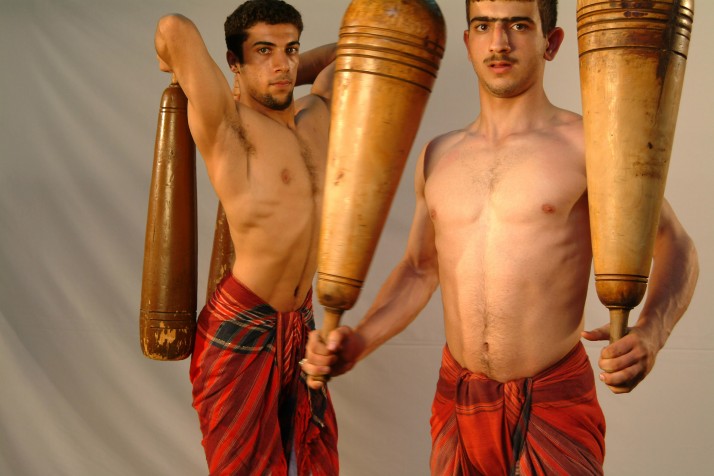 Sadegh Tirafkan, from the Zoorkhane series, 2003-4
Sadegh Tirafkan, from the Zoorkhane series, 2003-4
B.W: You both won awards at home and are well known internationally as well. You could travel freely. Is it an opportunity for everyone or just a few like you because you are an artist? Are artists, especially women artists, privileged and respected in Iran?
A.G: The scene is expanding. For example there are project spaces and small galleries appearing here and there in Tehran as well as in other cities, and collectives are being created. There are more chances available but the issue is that with the commercialization of the scene there are also more risks and obstacles. There are certain individuals and collectives that are putting some sort of filtering and choosing who and what can be shown outside of Iran. In the past 9 years, I have tried as an independent curator to break this cycle and in the absence of independent institutions there are areas which can be filled with smaller collectives and more organic micro organizations where they can create their own scene.
S.E: Almost everyone can travel freely as a tourist. Sometimes it is easier or harder to travel depending on what kinds of documents are required or how much funding is available. In the past few years there have been so many international projects that involve Iranian artists. I prefer that my work be the center focus of the project rather than the fact that I am a female artist. Generally I prefer that my work can be seen beyond the political, geographical, and gender specific point of views in a more open way. Unfortunately it seems that this is not avoidable and it is something that while happen anyways.
A.F: (on women artists in Iran): I was really impressed with the number of excellent and actively practicing and exhibiting women artists in Iran. Some have become incredibly famous and definitely I sensed a really strong support from the male artists.
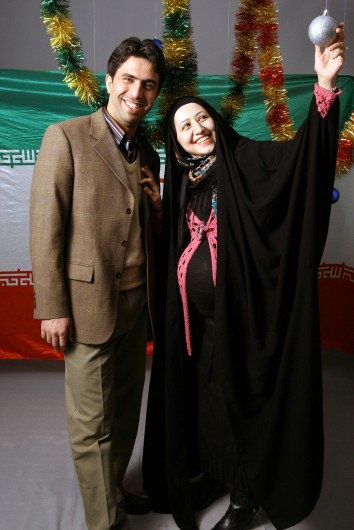 Zeinab Salarvand, Hope for the Future: Contentment in the Islamic Republic of Iran, No. 2 , 2008
Zeinab Salarvand, Hope for the Future: Contentment in the Islamic Republic of Iran, No. 2 , 2008
B.W: Samira, you are famous for your videos, like Olive. Is photography like a video still for you or video is just a moving photo? Which one is closer to your heart?
S.E: I am a professional painter with more than 10 years of experience. I experience the image in a more professional way then as a fixed frame. I became interested in seeing these frames in movement and this is why I began to use film, video, and moving images. Video is a moving photo for me I look at it as a picture which has movement within it. Only then are the specifications of the image and the aesthetics of it important to me. There are times you can see this link between the frames of the video and some of the compositions in my paintings, photography and video stills.
B.W: I love your faceless images Amirali. The women look real and strong even with their faces erased. Do they still have to hide their strength? How is their situation in Iran now? Are there any signs for a milder attitude towards women?
A.G: Well indeed they are strong images and this might be their weak point too … as they would be taken for granted by the media. The scene is much more open. These works were made in a certain time around the early years of internet expansion in Iran, they have to do something with the digital era and the internet phenomenon and the way we were experiencing it. It was a new form to express ourselves in an unknown territory, so its more about how a generation finds its own voice. I would even say that there is no need to do this again – I mean putting blank layers on the faces If i wanted to do the project again. It has its own history and time frame and there is no need to generalize it as it belongs to the cafe-goers, in particular artists and the youth scene back in 2002-2004.
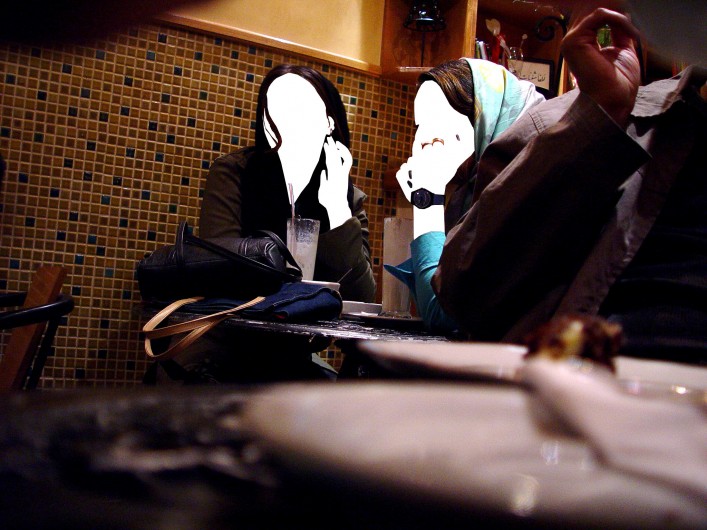 Amirali Ghasemi, Coffee Shop, Ladies, No 7, 2004
Amirali Ghasemi, Coffee Shop, Ladies, No 7, 2004
B.W: Besides creating faceless images, Amirali, you help to shape modern Iranian art by supporting emerging artists as a curator and with your virtual gallery, Parking Gallery. How did this idea come to you and how is it going now?
A.G: It is an artist run independent initiative and organization that was created in 1998. It was founded by a few art students through a small graphic/web design studio. In the summer of 2002, online project Parkingallery.com went online and since then along with introducing numerous young artists to Tehran’s emerging contemporary art scene, they initiated various International exhibitions and workshop projects. There were also no commercial ads. It emerged out of a need and very naturally. We didn’t want to do something in a very fast way so we had to start documenting what we were doing, what was interesting in the scene, and we then started to contribute to that scene. Our website was in English at the beginning so it was welcomed. It was one of the places where you could see what was going on in Tehran at the time. It was and still is a very exciting challenge because there are so few independent spaces. We tried to remain as independent as possible and to have enough distance to create our own sidewalks instead of jumping from one island to another.
B.W: Creating art can be a deeply personal experience. Is there anything that affected you as an artist while you were working on these images? Is there any one moment that stands out?
A.G: I take my inspiration from the society and try to make an interactive experience out of it. There are many levels like personal moments and that is more visible in my newer works like Amirali’s Medical Profile and Imaginary Girl-friends. Some of them are more socially inspired like Coffee Shop Ladies and Tehran Remixed, the Party Series among others.
S.E: Based on their character every artist has their own journey during their career. There are many things that influence an artist on their way but then there is the issue of choice. You have to choose what to work on and what has more impact on you and your life. Sometimes I realize that a topic has chosen me and has its own urgency to be done. One particular influential moment was when I was working on A Dowry for Mahrou. I was in a film workshop by Abbas Kiarostami and I was invited to a wedding. I was not aware of what I was doing but I was just filming. When I encountered the bride it was as if me and my camera were surprised by that moment. I think this is the same thing that happens with the viewer. When I came back from that small town and started editing it, it was a gift that I could present to that very young bride. I wanted to protect her fragile moments and beauty from the hands of time. I believe that is what art does. It protects the specific moment from being forgotten.
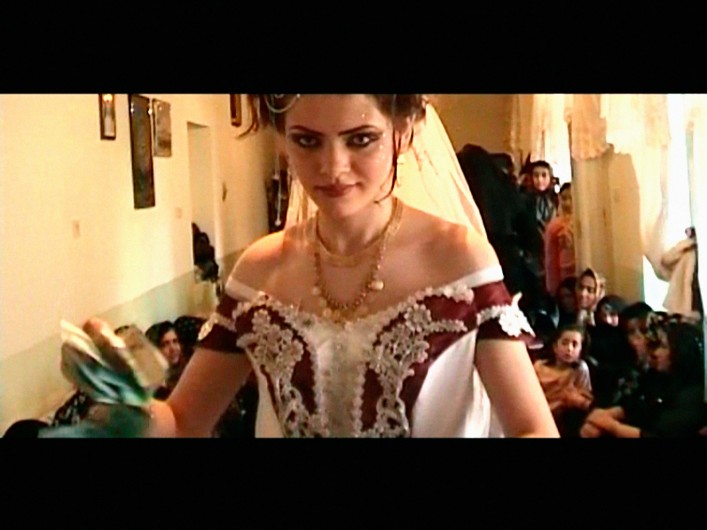 Samira Eskandarfar, Film still from Dowry for Mahrou, 2006
Samira Eskandarfar, Film still from Dowry for Mahrou, 2006
B.W: What do you hope to archive in presenting these pieces to the public here in Toronto, for example in a political or cultural sense?
A.G: What is interesting is to see how fragments of a society can be seen in a new context. It is an interesting journey where there are similarities and differences that people can relate to. This series has been shown international and there are so many different interpretations happening. For these kinds of projects I try to not be so protective of it and leave it a bit open to see what happens in each country it is shown in. I hope it can be inviting and engaging, though not within a political or cultural tension.
S.E: I look at it in a more cultural thing rather than political. The political view on the show coming from Iran is irresistible. I prefer though not to go in that direction, instead I hope that the works can be seen in a more relaxed way. I would like to show my interpretation of life and I think there are things all around the world that we share in common. In my opinion, human beings despite the place they are living in, are more similar to each other than different and thus these differences can be an opening for dialogue and engagement.

